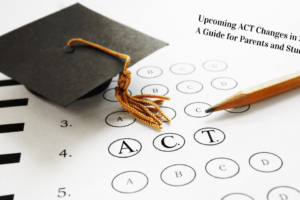
Starting a Campus Disability Support Group

College life is a significant adjustment for incoming students. The adjustment can be overwhelming for some students with disabilities. No student—with or without a disability—must deal with this adjustment alone. Students with disabilities can find campus support groups. These might be organizations catering to students with disabilities in general, or they might be specific to a particular disability. If students can’t find such a group, they can start one.
Many potential barriers await students with disabilities as they begin college. The barriers often involve infrastructure, such as buildings and pathways that aren’t readily accessible. Other barriers might be due to a school’s reluctance or inability to provide particular accommodations. In both cases, these students might find college to be less accommodating than high school had been.
The most significant barriers might result from less obvious obstacles. During high school, students with disabilities likely knew many of their peers and many of their peers knew about them and their needs. In college, these students might start off being as anonymous as everyone else. Moving from high school to college typically involves a change from a smaller to a larger environment. Around the time students with disabilities might have become comfortable with their high school social circles and environs, they end up having to learn how function in new, possibly more daunting systems. This can impact everything from forming friendships to locating the most disability-friendly restrooms.
While colleges do have some obligations to provide for students with disabilities, the obligations aren’t as profound as they are for K through 12 schools. The difficulties students with disabilities might face don’t stop with what can be provided by the colleges, though. Becoming comfortable in the less structured but more demanding world of college can create undue stress on individuals who already might face atypical challenges because of their disabilities. Without a resource room, special education teacher, or built-in set of easily identifiable peers, students with disabilities might feel lost in college.
Finding students in similar situations can be nothing short of salvation. Disability support groups can be the conduits for this. Meet-ups dedicated to students with disabilities might exist on campuses, as might national chapters of particular disability advocacy organizations. Some campuses might have their own disability support groups. Students seeking advice or camaraderie might simply join a group that is already in place.
If such a group doesn’t exist, starting one could be the best recourse. Other students with disabilities likely would seek the group if someone started one. Many of these students might be facing difficulties that a group might be better able to address. They might simply want some peers with whom they can relate. Banding together can create a community of students with similar needs that has a stronger voice than any individual student.
Before beginning, parameters must be established. Will the group focus on a specific disabling condition, like cerebral palsy? Will it be for people who use wheel chairs and walkers? Will it focus more on a less visible condition, such as Asperger Syndrome? The group might be more of an alliance for students with any disability, or it might be a vehicle for those with some particular condition. Whatever the membership criteria, the group should have pre-established goals. What is the point of the group? Will the members advocate for their rights on campus? If so, what will the agenda be? If not, will it be more about forming social connections and sharing ideas and tips? The group can have several functions, but these should be known before the start. As members take interest, their insights could give focus to the group’s purpose. Also important will be establishing the group’s hierarchy. Will it be a general membership group in which everyone has the same voice, or will there be any leadership roles? Many decisions need to be made before taking further steps.
The structure will be important. Nearly as important will be the group’s position on campus. Most colleges have a procedure for starting any organization. Aspiring founders should learn what this is in the early stages. Working within the college’s guidelines can be crucial to being able to use campus meeting spaces, accessing campus message boards and email servers, and posting information in certain public areas. An officially recognized group might be given representation in whatever student government is in place. Creating an unsanctioned group is an option, but creating one with the college’s blessing has advantages.
Advertising is necessary to draw members and attention to any causes. Old-fashioned fliers work well for this, so long as they are attractive and provide adequate information. Posting these around student union buildings, student services centers, or offices of disability would help. Again, the college’s existing message boards might be of use. Founding members might use social media connections to reach large audiences quickly.
With an initial meeting approaching, founding members must consider what that all-important first meeting will address. An agenda should be in place well in advance. The meeting space should be welcoming (and accessible!). The founders should be warm and supportive of those who attend. That first meeting will set a tone for the group’s future endeavors, whether these involve making changes on campus or finding ways to help fellow members.
Students with disabilities attend college to take on new experiences. They shouldn’t turn only to other students with disabilities for social connections and support. At the same time, they should be learning how to represent themselves and thrive with as little assistance as possible. These are idealistic goals, but to reach them, students might need some initial support from an organization dedicated to their needs. Having peers with disabilities who have similar experiences and goals can be a much-needed resource for those entering college. If this resource isn’t in place, students with disabilities can put it in place using the steps outlined above. Someone will be grateful for the effort.
Written by Jeff Hartman



